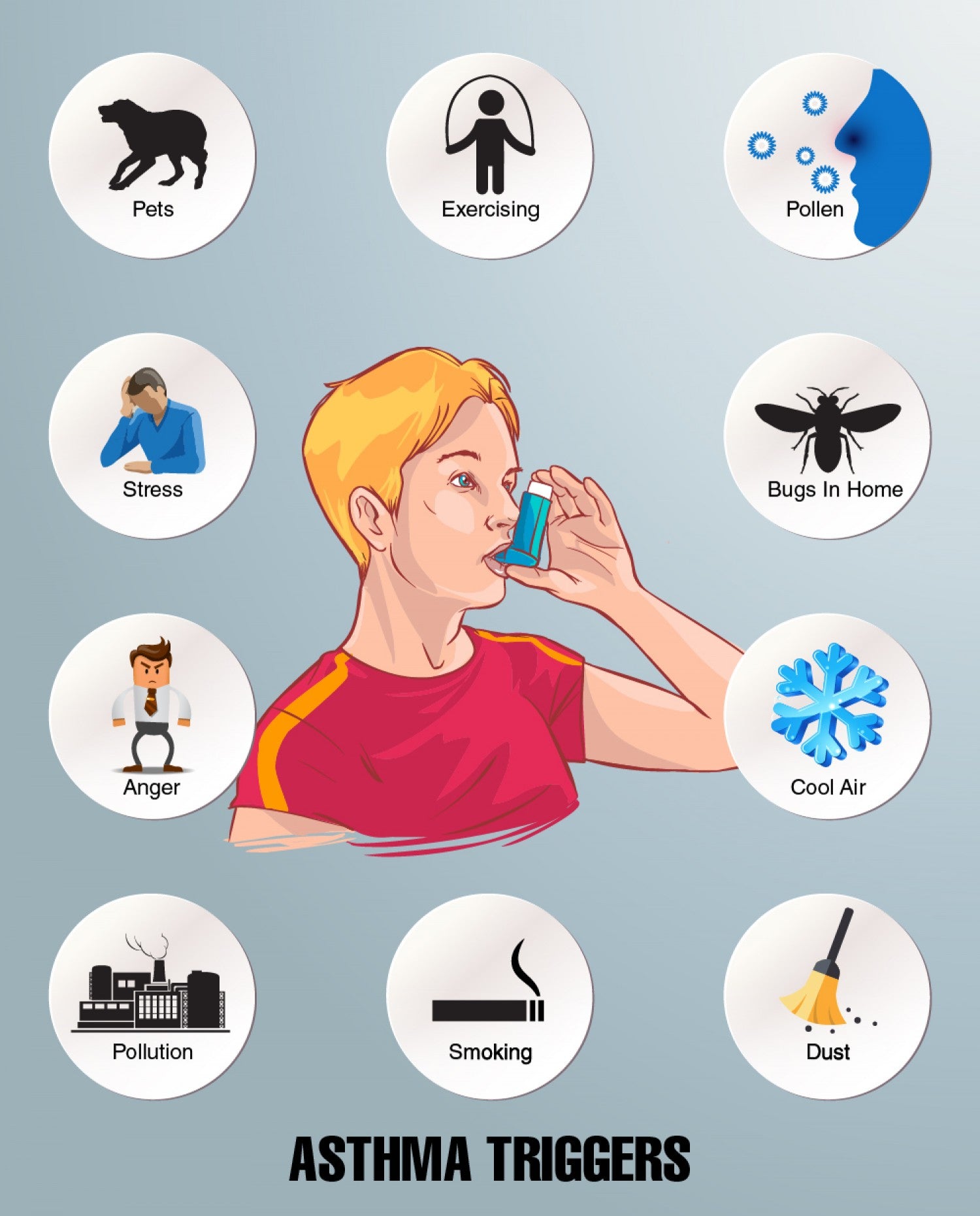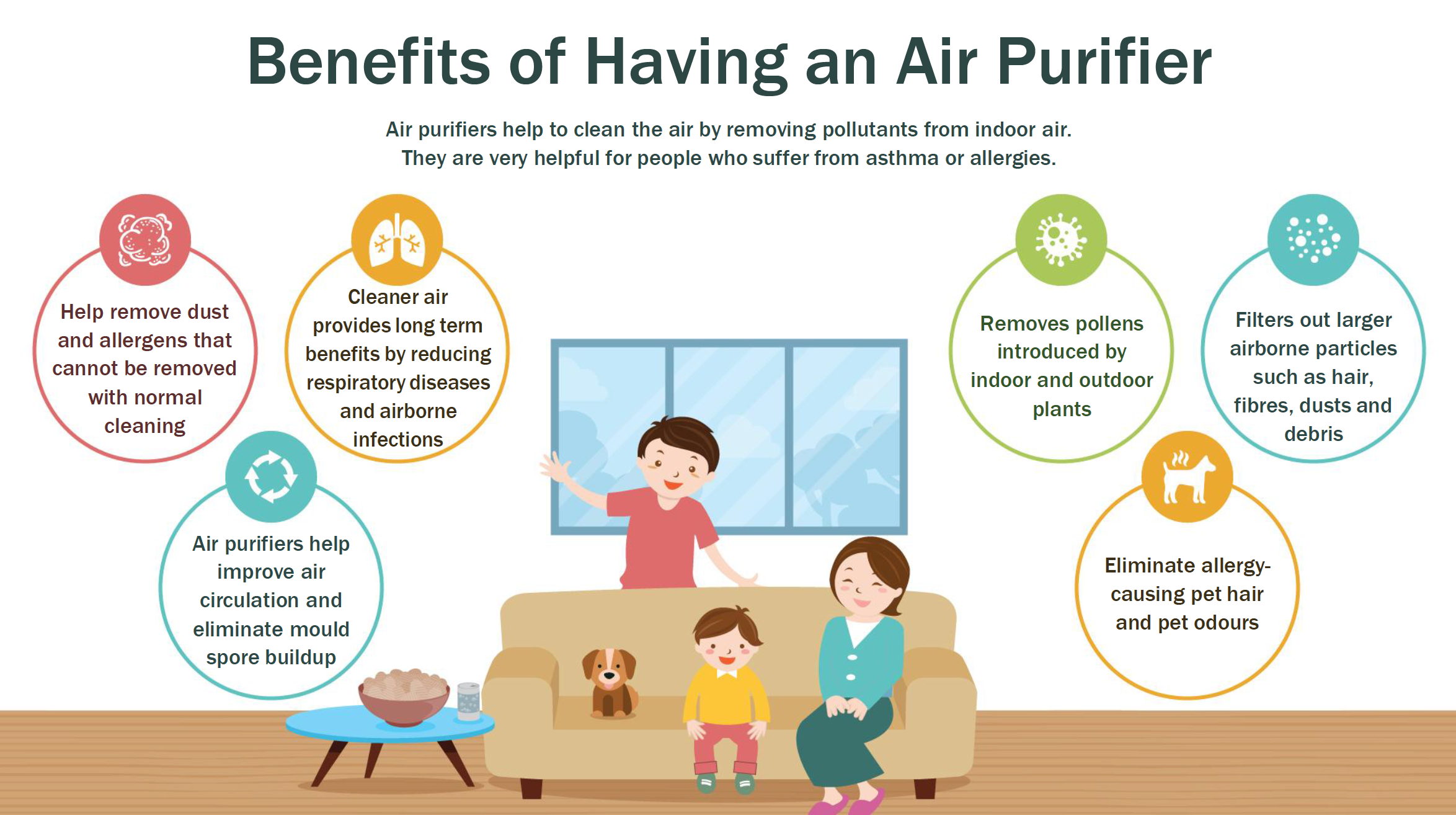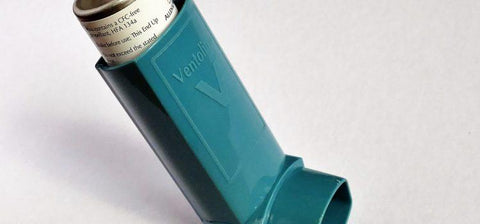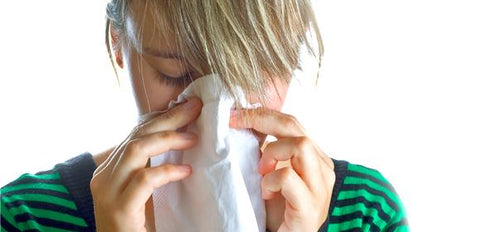Asthma affect over 330 million people around the world and according to recent reports, its prevalence is rising. One way we can help relieve asthma from the home is by improving the indoor air quality at home and removing asthma triggers from indoor air. In this article, we explore the benefits of an air purifier for asthma.
Asthma affects 1 in 9 Australians, or around 2.5 million people. This long-term, respiratory disease seriously impacts sufferers’ health and quality of life, interfering with their daily life and costing sufferers millions of dollars spent on medication, medical services, and hospital admission costs.

The exact cause of asthma is unknown and varies from person to person. However, research indicates that you’re more likely to develop asthma if you have a family history of asthma, eczema, or any allergy (such as hay fever), had bronchitis as a child, or have been exposed to smoke or harmful airborne substances.
However, anyone can develop asthma, even if they don’t have a history of asthma. One example is the most recent severe episode of thunderstorm asthma that occurred in Melbourne in 2016, which resulted in 8500 emergency asthma visits and nine deaths. Thunderstorm asthma has also happened previously in Canada, the United Kingdom, the United States, and Italy.
Studies also indicate that many of today’s lifestyle choices can also cause asthma indirectly. Our housing, diet, lack of physical activity and hygienic environment (causing lower immunity), may be adding to the increasing numbers of people with asthma in the last few decades. Environmental pollution and indoor pollution may also be worsening asthma symptoms and acting as triggers.
How to manage asthma triggers
While we can’t control many of the causes of asthma, we can manage our exposure to asthma triggers.
Asthma triggers are anything that irritates your airways and starts asthma symptoms or worsens them. Examples of asthma triggers include pet dander, dust mites, mould, pollen, and irritants in the air such as smoke, chemical fumes and strong odours. However, exercise, stress, extreme weather conditions, and colds (such as the flu) can also trigger asthma.
Prevention of symptoms is the best strategy for managing and treating asthma. Taking your asthma inhaler every day and having a written asthma action plan are important steps to manage asthma triggers. Additionally, you should also go for an asthma review with your GP at least once a year to give you the best protection against your triggers as possible.
Ultimately, avoiding asthma triggers is crucial to prevent an asthma attack. While triggers such as pets, cigarette smoke, and alcohol are easy to avoid, many common triggers such as pollen, pollution, and dust mites can be impossible to avoid. However, when you’re indoors, you can use an air purifier to prevent asthma triggers.
Benefits of an air purifier for asthma sufferers

Air purifiers can help to relieve asthma symptoms by removing common asthma triggers from indoor air. An air purifier for asthma sufferers is invaluable at home, in the office, or even in the car when indoor air pollution can be 10 times more harmful than outdoor pollution.
Investing in an air purifier for asthma relief makes sense, especially when we spend 90% of our time indoors. An air purifier helps asthma by removing asthma triggers from indoor air through a set of filters. Learn how it works below:
How an air purifier removes asthma triggers

An air purifier has multiple layers of filters that work together in removing different types of harmful particles from the air. A fan forces air into the air purifier, through a set of filters, and then pushes it out again as clean, healthy air.
The first layer of filter is usually the pre-filter, and this filter traps larger particles such as hair and dust. By removing these large particles, the pre-filter helps to protect the other filters inside to maintain their efficiency.
After the pre-filter, air is pushed through the air purifier’s carbon filter. The carbon filter uses activated carbon to neutralise odours and VOCs (volatile organic compounds) in the air.
The air then passes through the HEPA (high-efficiency particular air) filter, which plays a major role in relieving asthma symptoms. To qualify as a HEPA filter by US government standards, the air filter must remove 99.97% of particles that have a size of 0.3 micrometers. Common particulates that can be filtered by a HEPA filter are pollen, pet dander, dust mites, tobacco smoke, mould spores, and some bacteria and viruses.
Next, the air will usually pass through a Titanium Dioxide filter, which neutralises gases and breaks them down into harmless molecules. Working together with UV radiation inside the air purifier, the machine can more thoroughly eliminate airborne bacteria and viruses from filtered air.
Air purifier for asthma relief
The most common allergic triggers of asthma, such as house dust mites, pets, pollen, and mould, are difficult to avoid completely. However, with the help of an air purifier, they can be reduced to control your asthma and make symptoms easier to manage.
The National Asthma Council of Australia recommend not only the use of standalone air purifiers for asthma trigger removal, but also the use of HEPA filters in your vacuum cleaners and air conditioners, if possible. They also recommend removing mould indoors as mould is also an allergen. While air purifiers can help with that, a dehumidifier for mould removal is much more suitable as they lower indoor humidity, which is essential to mould growth.
While you can’t solely rely on an air purifier for asthma relief, it can seriously help reduce asthma triggers indoors. Contact us if you’d like to find out about the best option for an air purifier for asthma, or if you’d just like more general information about air purifiers.
Resources:
http://www.globalasthmareport.org/
https://www.nationalasthma.org.au/
http://www.asthmahandbook.org.au/
Asthma Triggers infographic:
https://visual.ly/community/infographic/health/asthma-triggers-0
View Air Purifiers:






